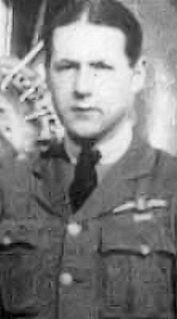Related Research Articles
Thomas Falcon Hazell & Bar was a fighter pilot with the Royal Flying Corps, and later, the Royal Air Force during the First World War. Hazell scored 43 victories in 1917–18 making him the fifth most successful British "flying ace" of the war, and the third most successful Irish-born pilot, behind Edward Mannock and George McElroy, as well the only pilot to survive the war from both groups.

Francis Granger Quigley, was a Canadian aviator and flying ace of the First World War, who was credited with 33 aerial victories. He was notable for scoring the majority of his victories against German fighter planes.
Captain William Melville Alexander was a Canadian First World War flying ace, officially credited with 22 aerial victories.

Air Vice-Marshal Albert Earl "Steve" Godfrey MC was a Canadian First World War flying ace, officially credited with 14 victories while flying for the Royal Flying Corps. He spent the remainder of his career in the Royal Canadian Air Force.
Captain John Victor Sorsoleil MC was a Canadian First World War flying ace, officially credited with 14 victories.
Major Charles Dawson Booker was an English World War I fighter ace credited with 29 victories. He was promoted to high rank while relatively young as a result of his gallantry and unswerving dedication to his country.
Leonard Henry Rochford, was a British flying ace of the First World War, credited with 29 aerial victories. He returned to military service in the Royal Air Force during the Second World War.
Flight Lieutenant James Anderson Slater was a British First World War flying ace, credited with 24 aerial victories. He served in the Royal Air Force (RAF) as an instructor after the war until killed in a flying accident.

Air Vice Marshal George Roberts Howsam, CB, MC was a Canadian First World War flying ace, officially credited with 13 victories.
Captain Ronald McNeill Keirstead DSC was a Canadian First World War flying ace, officially credited with 13 victories.
Captain Ronald Sykes (1899-1977) was a World War I flying ace credited with six aerial victories.
Captain James Dennis Payne was a World War I flying ace credited with fourteen aerial victories.
Captain Guy Borthwick Moore (1895-1918) was a Canadian World War I flying ace credited with ten aerial victories.
Captain Maxwell Hutcheon Findlay was a Scottish World War I flying ace credited with 14 aerial victories. He remained in the RAF postwar for several years before going on to a civilian aviation career that ended with his death in the Johannesburg Air Race of 1936.
Captain Frank Clifton Gorringe was a British World War I flying ace credited with 14 aerial victories.

Lieutenant Kenneth Russell Unger was an American World War I flying ace credited with fourteen aerial victories. His candidacy rejected by his own nation, Unger applied to the British Royal Flying Corps for military pilot training in June 1917. Once trained, he was assigned to the Royal Naval Air Service (RNAS). As the RNAS was merged into the Royal Air Force, Unger scored his aerial victories between 26 June and 1 November 1918. In later life, Unger remained involved in aviation and served again during World War II. He also joined the U.S. Navy Reserves, rising to the rank of rear admiral.
Captain Frederick Elliott Brown was a Canadian World War I flying ace credited with 10 aerial victories. He returned to military service during World War II.
Captain Frank Cecil Ransley was a British World War I flying ace credited with nine aerial victories. He would survive the war to become one of its oldest aces before dying at 95 years of age.
Captain George Goodman Simpson was an Australian-born flying ace credited with eight confirmed victories while flying for the Royal Naval Air Service during World War I. He would serve his country again during World War II.
Flight Lieutenant Desmond Fitzgerald Fitzgibbon was a British flying ace who served in the Royal Naval Air Service during World War I, and was credited with eight aerial victories. He returned to serve in the RAF for a few years in the early 1920s, and again during World War II.
References
Above the Trenches: a Complete Record of the Fighter Aces and Units of the British Empire Air Forces 1915-1920. Christopher F. Shores, Norman L. R. Franks, Russell Guest. Grub Street, 1990. ISBN 0-948817-19-4, ISBN 978-0-948817-19-9
- 1 2 "Edward Rochfort Grange". www.theaerodrome.com. Retrieved 6 February 2010.
- ↑ Above the Trenches: A Complete Record of the Fighter Aces and Units of the British Empire Air Forces 1915-1920. p. 175.